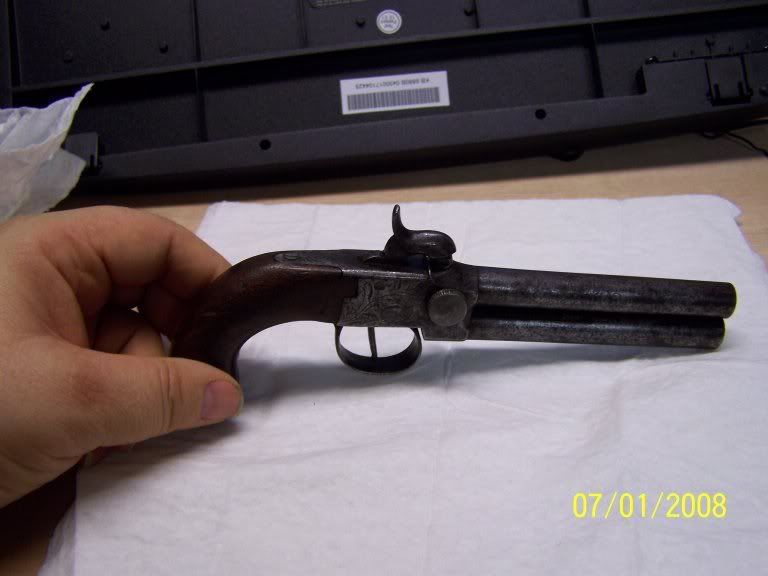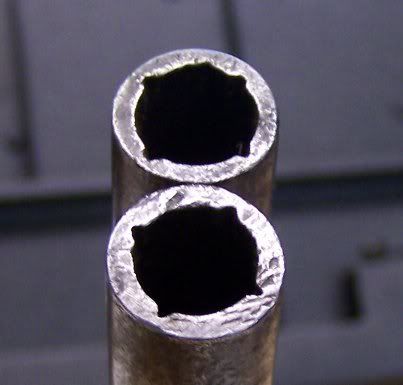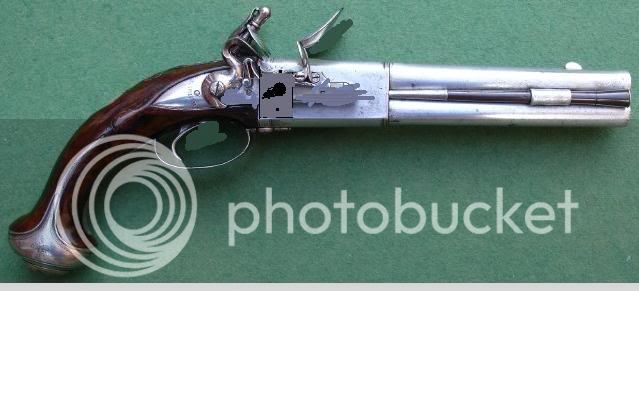i have access to lathes at my last job, and yes this is going to be quite the feat to achieve.
i have been researching this in my spare time for the last several years,
oh ya drilling was just a shortform, i was thinking ether use a drill or boreing bar, then probable a boring bar to square the bottom of the hole, then ream. as for the barrel turn down to a rough size, within about .010 maby, then grind to a final size based on what the reamer mic's out to be. they have a grinding lathe.
now i know that this would be a nice way to go, but my reasoning behind this way is that if i were to screw the barrels (for the record i was thinking a round,.50cal) into the breach, how am i going to gip them when it is time to cinch them tight.
As i see it, i do want these to be permanent, it looks like i could just go ahead an thread them in and have a sacrificial portion to cut off, like if i milled a flat or just used a big pipe wrench on each barrel, but then it is crowning issues.
I would like to have them have a flat true muzzle and a crown to support that, but if this were the way i would have to put center marks on the back of the breach on center to the bores of the barrels and use a mandrel for the muzzle to turn it flat, then a coning tool.
i dont have access to Oct. barrels or that wouldnt be a problem except for timing.. to have both barrels be square to each other.
so problems are defiantly there. and it continues..
As for the lock..... well i have chosen to a single lock, R/h ignition with a tap action pan for 2 barrels. my initial thoughts were to that of using an external mainspring and a frizzen spring similar to that of a tap action pistol in flint.
http://www.cwslagleantiques.com/view_detail.cfm?catid=66&id=3384
but there is enough room to have regular mainspring, and that wouldnt interfere with the selector pan i have to make. also this would be a carbine smoothbore.
as far as as i can tell it would be the first arm of this type of action.
Oh yes i have taken on quite the project for myself. as it stands i have sorta figured out the lock. its going to be difficult to say the least. :cursing: :cursing:







